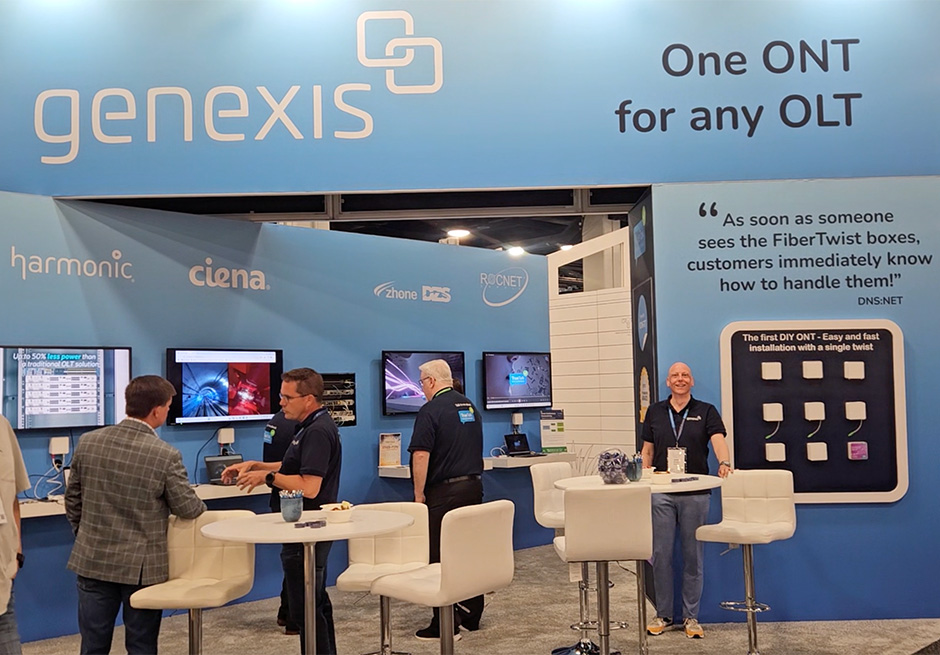Fiber Connect 2025 in Nashville was more than just an industry meetup—it was a deep dive into what’s next for fiber broadband. From Open Access Networks to broadband equity, conversations buzzed with a common theme: interoperability is essential for fiber rollout and faster speeds. When network operators talk about what keeps them awake at night, it’s often about avoiding lock-in, simplifying upgrades, and ensuring customer satisfaction. Here are some of our key insights from the event, highlighting why interoperability is a strategic advantage.
What keeps network operators awake at night?
At our speaking engagement, we addressed how network operators can minimize risks that might disrupt a customer’s experience of the fiber network. The recent industry news this spring, where an end-to-end supplier instantly stopped shipments of OLTs and ONTs, has been a rough wake-up call for many who have opted for single supply end-to-end solutions.
As an operator of a broadband access network, chances are you’ve asked yourself these questions:
- Proprietary features: What ONT will work with my installed base OLT?
- Slow roadmap: What OLT will work with my ONTs, and will my vendor prioritize the big network operators over me?
- Price increase: How can I avoid having to go into my customers’ homes again and incur costly truck rolls to switch equipment if I must add a second supplier of OLT or ONT, and the interoperability is not available?
These concerns are real and recurring. Proprietary pairings and end-to-end solutions may sound convenient, but they often come with vendor lock-in, slower feature rollouts, and limited choice. The recent concern about securing OLT equipment highlights the need for a backup plan even more prominently. As one attendee put it: “If I install an OLT today, I don’t want to change the ONT tomorrow—it’s expensive, disruptive, and frustrating for customers.”

The risks of relying on closed, end-to-end vendor ecosystems are especially acute in a consolidating market. With acquisitions and mergers on the rise, operators are inheriting complex, multi-vendor environments. The only way forward is to simplify—and that means embracing open, interoperable solutions.
Open Access Networks and the need for interoperability
Open Access Networks were one of the themes discussed at FiberConnect, echoing trends already established in Europe. Whether driven by the consolidation of networks, the utilities sector, or private equity, the separation of infrastructure from services makes one thing essential: plug-and-play interoperability.
Several panels emphasized this point: in a landscape where multiple ISPs share access to a single network, interoperability is essential. They need interoperable devices, one firmware, and a seamless plug-and-play experience. We recommend our universal ONT that works with multiple OLTs.
One ONT for any OLT
We showcased how Genexis ONTs are interoperable with any OLT, thanks to our award-winning autosensing software TrueTalk™. It detects the OLT and adapts as needed. There is only one firmware version for all OLT brands, and it is pre-installed on all Genexis PON ONTs, which is a cost-effective way to future-proof operations.


We demonstrated the same Genexis ONT working with four different OLTs—from Harmonic, Ciena, RocNet, and DZS (provided by RocNet)—live on the show floor. That level of flexibility is what future-proofing really means,” says Reinier Kramer, Head of BU Fiber-to-the-Home.
Lower OpEx and greater sustainability
Our OLT agnostic ONTs also bring significant benefits in terms of efficiency and sustainability.
- Lower Operating Expenses (OpEx): Fewer truck rolls, less downtime
- Easier upgrades: Move from 1 Gbps to 10 or 25 Gbps with the same base installation
- Less waste: We reuse mounting brackets, FTUs, and passive components
A market at a crossroads
The US fiber market is transitioning. Connecting homes is evolving into a race to activate, optimize, and monetize those connections. The future of fiber is open, dynamic, and built on interoperable solutions that maximize business for operators and benefit customers.
Interoperability isn’t just tech talk—it’s what helps network operators sleep better at night.


